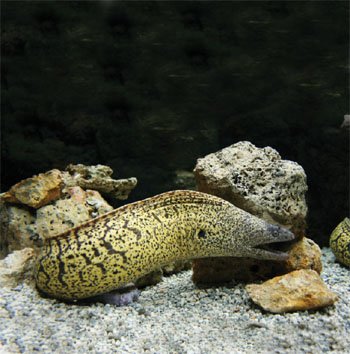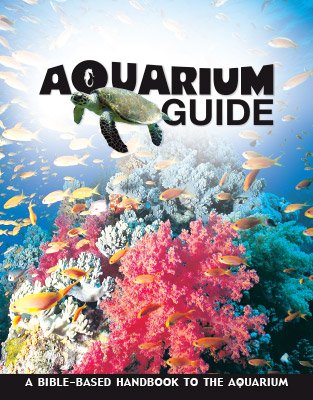Moray Eel
The shape of the moray eel allows it to hunt prey that is larger than it can swallow.
Design

The shape of the moray eel allows it to hunt prey that is larger than it can swallow. When the eel captures a large prey, it will wrap itself around the victim in a sort of knot and either flatten the prey’s body enough to swallow it, or tear off a piece of its prey to eat it. This predatory behavior was not part of this creature’s original design since all animals were created as vegetarians. They did not hunt other animals until after the Fall of man.
Features
- The moray eel has a long, slender body with one long dorsal fin that runs along most of the back to the caudal fin (the tail) and into the anal fin, which runs along the underside of the body. Most species lack pectoral and pelvic fins.
- A moray has sharp, thin teeth that protrude from its upper and lower jaws, and sometimes from the roof of its mouth. Its teeth point backward to prevent slippery prey from escaping.
Fun Facts
- The moray eel gets its color from the protective mucus it secretes that covers its body. This mucus contains a toxin in some species.
- The moray has a small, circular gill on each side of its head, well behind the mouth. The mouth is kept open (and moving) to help water circulate through the gills.
- This fish has poor eyesight but a very good sense of smell.
- Morays are edible and are hunted for food throughout much of the world.
CLASS: Osteichthyes (bony fishes)
ORDER: Anguilliformes (eels)
FAMILY: Muraenidae (moray eels and morays)
GENUS/SPECIES: 200 species in 15 genera
Size: From 6 in (15 cm) to 15 ft (4.5 m)
Weight: Average 30 lbs (13.5 kg)
Diet: Mostly fish, also crustaceans and octopuses
Habitat: In rock crevices and small caves in all tropical seas and some temperate oceans
Aquarium Guide
With fun facts about more than 100 animals, this long-awaited Aquarium Guide includes beautiful pictures and reveals the incredible facts and design features that point to our amazing Creator. This handy size guide is excellent for school field trips and family trips to your favorite aquarium!
Browse Kids Book- © 2025 Answers in Genesis
- Privacy Policy
- Contact
- About

